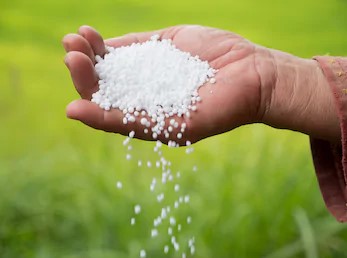About Urea
Fertiliser – Why do we need it, how is it made and who trades it?
Every time a crop or animal product is exported from a farm, nutrients, notably nitrogen, phosphorus, potassium and sulphur have been removed from the farm and its soils.
To sustain current and future productivity, the nutrients need to be replaced by applying fertilisers. The most common fertilisers are nitrogen based with granular urea being the most common nitrogen-based fertiliser used in our agricultural systems.
In the last 50 years global crop production has expanded threefold. Without fertilisers to increase farm productivity to feed the world, vast areas of additional land would have needed to be converted from natural ecosystems like rainforests into agricultural production.
As populations continue to grow, and with higher yields of food per hectare of land are required and more nutrients must be replaced to maintain sustainable land use.
Who trades urea?
The global demand for fertiliser is around 200 million tonnes (Mt) per annum. Around 110 Mt of this demand is urea. (Fertilizer Outlook 2019-2023, IFA)
Urea is a globally traded commodity and with over 50% of urea traded as seaborne freight.
For Australia and South East Asia region, the demand for urea on an annual basis is approximately 2 Mt and 24 Mt respectively.
For Australia all granular urea is currently imported, predominantly from the Middle East, South East Asia and China. There is currently no domestic production.
Different countries have different seasons when they apply urea. For South Eastern Australia, the main application season is February to July. Other parts of Australia and New Zealand have different application times due to climate and rainfall.
How is urea made?
Fertilisers are made from natural resources. The world’s most common fertiliser, granular urea is made up of 46% nitrogen (1 tonne of urea contains 460 kg of nitrogen).
The most common way of producing granular urea is to convert natural gas from its main constituent, methane as follows:
- Methane is converted to hydrogen;
- Nitrogen is separated from air (which contains over 70% nitrogen);
- Nitrogen and hydrogen are mixed at high pressure and temperature to form ammonia;
- The ammonia is then reacted with carbon dioxide to form a liquid urea solution;
- The urea solution is then fed through a granulation plant to form a granular urea product which is usually white, round spheres 2-4mm in diameter.
The process for the NRUP is similar though, the syngas NRUP produces is higher in hydrogen than natural gas, so has a different process to create the hydrogen mix. The stages after that are identical.
Once produced, granular urea is transported to farmers to replace the lost nutrients and improve crop production.


